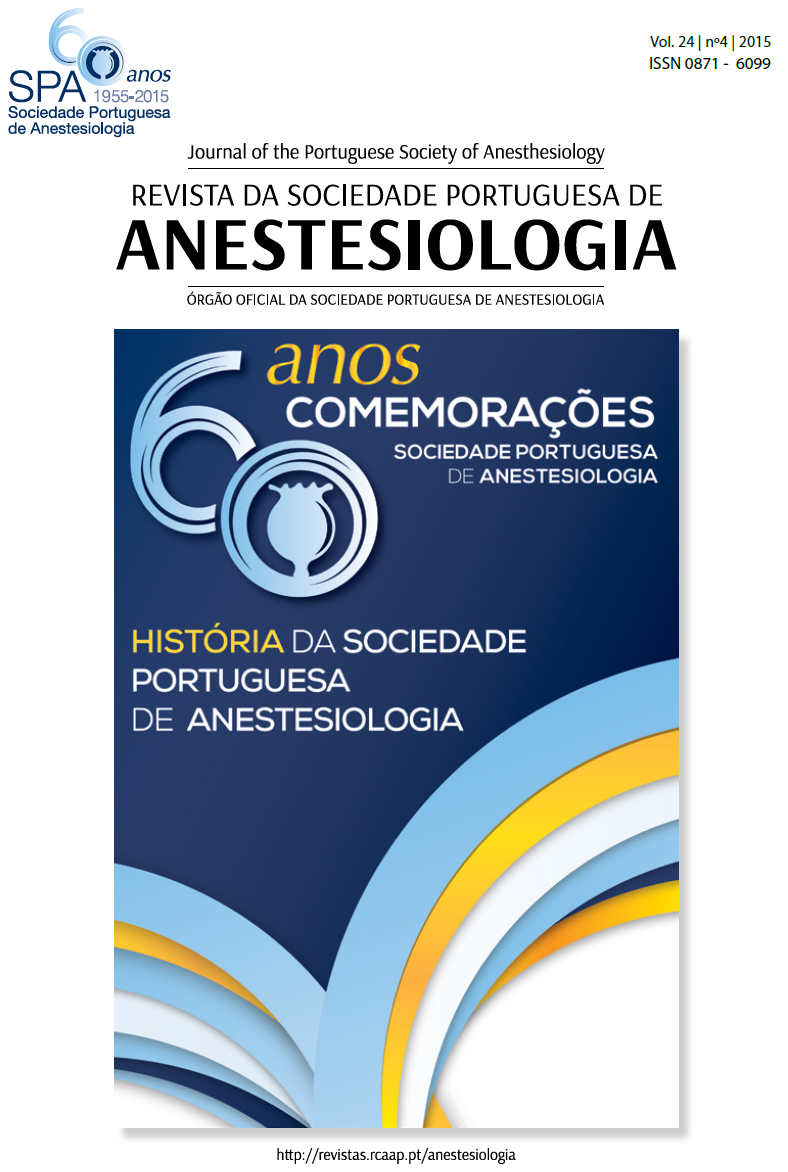Proximal Femural Fracture: Perioperative Approach to the Patient doing Anticoagulation and Antiplatelet Agents Based on the Recommendations of the Portuguese Society of Anesthesiology 2014, with the support of the Portuguese Imunohemotherapy Association a
DOI:
https://doi.org/10.25751/rspa.7153Keywords:
Anesthesia, - Anticoagulants, - Femoral Fractures, - Platelet Aggregation InhibitorsAbstract
The proximal femoral fracture, which usually occurs in the elderly, is a commoncause of morbidity and mortality in this age group. These patients have severalco-morbidities and are often poly-medicated, factors contributing to a prolongedhospitalization, increased perioperative complications and mortality. Evidence suggeststhat early surgery reduces the morbidity and mortality associated withproximal femur fracture, while postponement beyond 48 hours is associatedwith higher postoperative mortality and complications at 30 days of hospitalization.The perioperative management of these patients is complex. Surgical delay usuallyoccurs in the presence of anticoagulants and antiplatelet drugs. In order to normalize the peri-operative procedures in these patients, it has been created amultidisciplinary working group that had as main objective the application of therecommendations of the Portuguese Society of Anesthesiology on the perioperativemanagement of patients treated with anticoagulants, published in 2014.A multidisciplinary analysis of literature based on the peri-operative treatment ofpatients proposed for surgical treatment of femoral neck fracture was performed.Several issues are subject of interest and analysis, such as reversal of anticoagulantdrugs, patient blood management and thromboprophylaxis and it was developed anactuation protocol. The establishment of multidisciplinary algorithms for the perioperativeapproach of patients with femoral neck fracture is essential to facilitate thedaily clinical practice.Downloads
Download data is not yet available.
Downloads
Published
2015-12-02
How to Cite
Fonseca, C., Marta, M., Dias, J., Pinto, R., Bettencourt, P., Maciel, J., & Araújo, F. (2015). Proximal Femural Fracture: Perioperative Approach to the Patient doing Anticoagulation and Antiplatelet Agents Based on the Recommendations of the Portuguese Society of Anesthesiology 2014, with the support of the Portuguese Imunohemotherapy Association a. Journal of the Portuguese Society of Anesthesiology, 24(4), 105–114. https://doi.org/10.25751/rspa.7153
Issue
Section
Consensus
License
Articles are freely available to be read, downloaded and shared from the time of publication.
The RSPA reserves the right to commercialize the article as an integral part of the journal (in the preparation of reprints, for example). The author should accompany the submission letter with a declaration of copyright transfer for commercial purposes.
Articles are published under the terms of the Creative Commons Attribution Non-Commercial License (CC BY-NC).
After publication in RSPA, authors are allowed to make their articles available in repositories of their home institutions, as long as they always mention where they were published.


